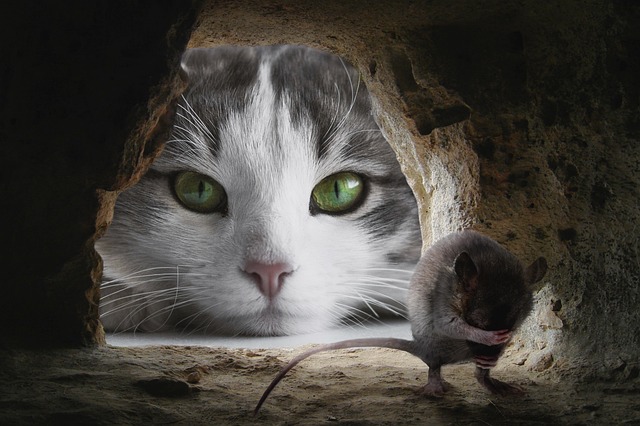Start With Lifestyle, Not Breed
Before you fall for a cute face or catchy breed name, take a step back. Pet ownership starts with understanding how you and your family actually live. Are your weekdays packed with school, work, and after-hours chaos? Or are you home most of the time, with room in your schedule for daily walks and play sessions?
Look at energy levels, too. A high-energy dog like a Border Collie isn’t going to thrive in a laid-back household that prefers slow mornings and short outings. On the flip side, a low-maintenance cat or older rescue dog can be a perfect match for families who keep things chill.
It’s also important to be honest about your time. Feeding, grooming, training, cleaning—these small jobs stack up fast. If your current life pace leaves you scrambling for downtime, a low-maintenance pet—or even waiting until things settle—might be smarter than jumping into daily care you can’t sustain.
Start by matching the pet’s needs to the time and energy you can consistently give. That’s the foundation for a happy home—for you and the animal.
Family Dynamics Matter
When choosing the right pet for your family, the people in your household—especially the kids—play an essential role. Pets can teach responsibility, provide companionship, and even help kids develop empathy. But not every home dynamic will be a good fit for every type of animal. Here’s what to keep in mind:
Consider the Age and Behavior of Your Children
Younger children and toddlers may be unintentionally rough with animals; older kids may be ready to take on specific care responsibilities. Pets should match not just your space and time—but also maturity levels.
- Infants and toddlers: May not understand boundaries; avoid fragile or easily startled pets
- Ages 5–10: Great age to introduce responsibility with supervision
- Teens: Can handle more complex care, like feeding schedules or training
Account for Allergies, Fears, and Accessibility Needs
Your family’s individual health and comfort levels should guide your pet choice.
- Common pet allergies: Dander from cats and dogs, hay from small mammals
- Fears or traumatic experiences: Be honest about anyone’s discomfort
- Physical limitations: Match pet care needs to family members’ abilities (e.g., strength to walk a large dog)
Teaching Responsibility—with Realistic Expectations
While bringing a pet into the family can help teach responsibility, remember that ultimate accountability usually falls on the adults. Set kids up to engage without overwhelming them.
- Assign age-appropriate roles (e.g., feeding, cleaning, training)
- Create simple, consistent routines for children to follow
- Use pet care as a chance to build empathy and consistency—not perfection
Including everyone in the pet selection process increases the odds of a smooth transition and a lasting bond. Intentional planning around your family’s dynamics leads to happier outcomes for pets and people alike.
Home Is a Factor Too
Where you live plays a huge role in choosing the right pet. Apartment living means tight quarters, limited outdoor access, and close neighbors. A Great Dane in a studio? Not ideal. But a cat or smaller dog breed used to indoor life? Works just fine. In contrast, a house with room to roam gives you more flexibility—especially if you’re thinking about energetic breeds or multiple pets.
Got a yard? Great. But don’t assume that alone makes your space pet-ready. Is it fenced? Are there escape points? Animals are smarter than we give them credit for—and more motivated to bolt than we’d like to admit. A secure yard can be a game-changer, especially during potty training or playtime, but it needs regular checks to stay safe.
Noise matters too. Some dogs bark more than others. Some cats are surprisingly vocal. In apartments, that could be a problem unless your walls are thick or your neighbors are saints. On the other side, if you live in a loud area, some pets may get anxious or overstimulated. Either way, knowing your noise tolerance—and protecting your pet from a sensory overload—should be part of the decision.
Popular Pet Options: Pros and Cons
Dogs: Dogs are social animals that thrive on attention and activity. If you want a loyal companion who follows you from room to room and is up for walks, games, or just hanging out—this is your match. But it’s not all cuddles. Dogs need solid training, daily exercise, and a predictable routine. They’re great for families with steady schedules and a decent energy level.
Cats: Cats are independent and generally lower-maintenance. They groom themselves, don’t need walks, and can be left alone for a good chunk of the day. Ideal for households that want a pet without the round-the-clock demands. Just note—some cats love attention on their terms, others stay aloof. They still need clean litter, vet visits, and regular play/human time.
Small animals: Pets like hamsters, guinea pigs, and rabbits can be a solid choice for first-timers—especially for kids learning the ropes. They don’t take much space, but they’re not totally hands-off. Small pets need clean cages, proper diets, and gentle handling. Rabbits in particular have more complex care needs than people assume, so do your homework.
Fish and reptiles: These pets are often picked for the wrong reasons. Sure, they’re quiet and don’t need walks—but maintenance still matters. Tanks must be cleaned, temperatures must stay stable, and diets can be specialized. Kids won’t be snuggling a bearded dragon or neon tetra, but if you’re into watching behavior or creating cool enclosures, these can be fascinating pets. Just don’t expect them to be low-effort care.
Hidden Costs of Pet Ownership
Getting a pet doesn’t stop at the adoption fee. Many new pet owners are surprised by the ongoing financial and time commitments that come with responsible pet care. Before choosing a pet, make sure your budget and daily schedule can handle everything that comes with the territory.
Ongoing Financial Responsibilities
Even the most affordable pets come with maintenance costs. Be prepared for:
- Food and treats: These are recurring monthly expenses based on pet size and dietary needs.
- Vet visits: Annual check-ups, vaccinations, and potential health emergencies add up.
- Supplies and gear: Beds, leashes, tanks, cages, crates, litter boxes, and toys all come with a price tag.
Emergencies and Insurance
Unexpected health issues can lead to costly vet bills. To stay prepared:
- Set aside an emergency fund specifically for your pet.
- Consider pet insurance to help offset expensive procedures or treatments.
- Plan for aging pets, whose healthcare needs increase over time.
Time as a Hidden Cost
Caring for a pet also means carving out regular time, especially in the beginning:
- Training: Puppies and newly adopted pets often require weeks or months of training.
- Grooming: Depending on the pet, this may be a DIY task or handled by professionals.
- Play and enrichment: Pets need regular interaction to stay happy and mentally stimulated.
Being realistic about both your financial resources and daily time will help ensure that pet ownership is a rewarding, sustainable experience, not a stressful burden.
The Adoption Route: Smarter Than You Think
Adopting from shelters and rescues isn’t just a feel-good move—it’s practical, responsible, and grounded. First off, it saves lives. Every adopted pet makes room for another animal in need. With overcrowding still a major issue in shelters across the country, adoption helps relieve serious pressure on an already strained system.
Beyond that, you’re not going in blind. Most shelters have adoption counselors who actually take the time to understand your living situation, schedule, and experience level. Their goal isn’t to just push pets out the door—it’s to set both animal and human up for long-term success. Think of it as matchmaking with a mission. Want a mellow senior dog for a quiet household? Or a playful kitten that’s good with kids? They’ll help you find that fit.
Adopted pets also tend to be vet-checked, vaccinated, and often spayed or neutered. That knocks out several up-front expenses right away. And while rescue pets sometimes come with tough backstories, many are already housebroken, socialized, and ready to settle in.
Want more proof? Check out The Impact of Pet Adoption on Animal Shelters to see how big of a difference one choice can make.
Long-Term Commitment, Not an Impulse Buy
A pet isn’t a weekend project—it’s a long-haul relationship. That means understanding how long each type of pet might be part of your life. Dogs can live anywhere from 10 to 15 years, depending on breed and size. Cats often stretch that to 15 or even 20 years. Smaller animals like hamsters might only make it to 2-3 years, while some parrots and turtles can outlive you. Choose with that in mind.
Life doesn’t stay still. Moving to a new city, welcoming a baby, or changing jobs are all major shifts that can affect your pet and how much attention and care you can offer. If you’re on the verge of a big change, it’s worth pressing pause until you’re in a more stable place. Pets thrive on routine and security. If that’s shaky in your life, they’ll feel it too.
Before signing any paperwork, ask some basic—but crucial—questions: Can I afford this pet long-term? What’s my backup plan during vacations or emergencies? Who helps if I’m sick or busy? These aren’t red-tape hurdles—they’re a gut check. If you want a pet that sticks, think about tomorrow, not just today.
Final Tips: Make the Right Call
Choosing a family pet isn’t just about picking the cutest face in the kennel. It’s a group decision that deserves real thought. First rule: everyone in the household should be involved. If your kids are old enough to feed, walk, or scoop, they’re old enough to have a say. Pets aren’t furniture—they’ll interact with every family member, so it’s important those relationships start off with buy-in, not resistance.
Next, don’t adopt blindly. Visit shelters. Spend time with multiple animals. See how each one behaves in real-time, not just behind a cage door or on a website. Virtual profiles don’t always capture the animal’s true personality. Chemistry matters.
Come in with grounded expectations. That shelter pup may not instantly become Lassie. Pets need time to adjust, training to succeed, and patience to thrive. You’re not buying a fantasy—you’re welcoming a living being with unique needs.
Ultimately, compatibility wins. A calm household doesn’t match with a high-strung husky. Allergies don’t work with long-haired breeds. If your lifestyle, energy, and routines don’t mesh with the pet, no amount of affection will make up for that friction. Choosing the right pet isn’t magic—it’s a smart match between real life and real needs.


 Susana Richersonear writes for pethubnest focusing on digital tools, smart gadgets, and trends that make pet ownership easier. Her articles guide readers toward modern solutions for everyday pet needs.
Susana Richersonear writes for pethubnest focusing on digital tools, smart gadgets, and trends that make pet ownership easier. Her articles guide readers toward modern solutions for everyday pet needs.


